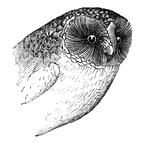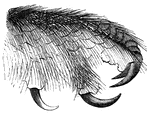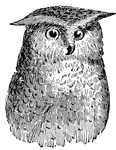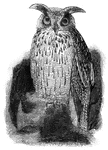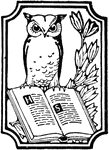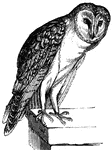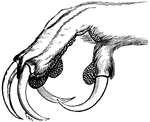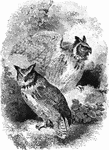Clipart tagged: ‘kowl’
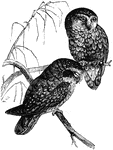
Athene Maculta
Athene maculta, which derive their name from the Greek goddess of wisdom, supposedly for their meditative…
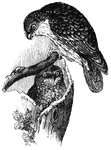
Athene conneviens
Athene conneviens, which derive their name from the Greek goddess of wisdom, supposedly for their meditative…

Owl
Owls can be found in all parts of the world, some as short as five inches long while others are as large…

Owl
A large group of birds of prey, including fully 150 species, about forty of which inhabit America. They…

Owl
A large group of birds of prey, including fully 150 species, about forty of which inhabit America. They…
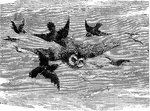
The Mobbing of an Owl
An adult owl being mobbed by a group of smaller birds. Mobbing occurs when smaller birds, in fear, will…
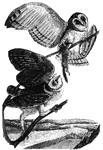
American Barn Owl
A pair of American barn-owls, one of which is grasping a small rodent in its claws.
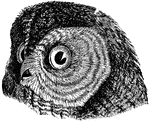
Barred Owl
"Strix nebulosa. Barred Owl. Hoot Owl. American Wood Owl. Toes fully feathered, nearly or quite to the…
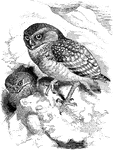
Two Burrowing Owls by the Mountains
"Speotyto cunicularia, the Burrowing Owl, a comparatively long-legged and short -winged bird with incomplete…

Eagle Owl
Eagle or great-horned owl, found in Europe and northern asia. It feeds on hares, rabbits, moles, mice,…

Head of an Eagle Owl
Head of an eagle owl. It has large eyes for seeing at night, and a hooked beak for snaring its prey.
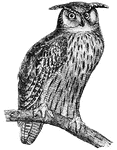
Great Horned Owl
Horned owls are distinguished by two tufts or horns of feathers placed on each side of their head.
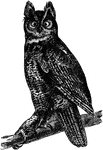
Great Horned Owl
"Bubo virginianus. Great Horned Owl. Hoot Owl. Cat Owl. Distinguished by its large size and conspicuous…
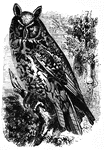
Great Short-Eared Owl
Genus ascalaphia, a large owl, native to southern Europe and northern parts of Egypt.
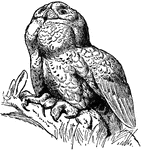
Great Snow Owl
"The owl is a popular name for any nocturnal, raptorial bird, of which about 200 species are known.…

Hawk Owl
The Hawk owl is about 15 inches long and feeds on rabbits, rats, mice, reptiles and birds, (Figuier,…
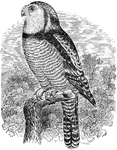
Hawk Owl
"Surnia funerea. American Hawk Owl. Day Owl. Bill and eyes yellow; claws brownish-black. Upper parts…
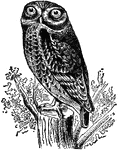
Rock Owl
"The owl is a popular name for any nocturnal, raptorial bird, of which about 200 species are known.…
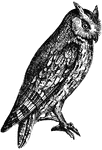
Scops-Eared Owl
The scops-eared owl is diminutive in size, not exceeding that of the thrush, (Figuier, 1869).
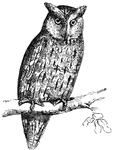
Scops-Eared Owl
The scops-eared owl is diminutive in size, not exceeding that of the thrush, (Figuier, 1869).
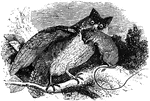
Scops-Eared Owl
A scops-eared owl feeding on a small rodent. It is common in Central and Southern Europe.

Screech Owl
Strix flammea, the nocturnal White Screech-, or Barn Owl, is orange-buff above, with brown, grey and…
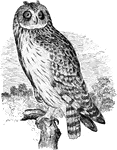
Short-eared Owl
"Asio accipitrinus. Short-eared Owl. Marsh Owl. Ear-tufts inconspicuous, much shorter than middle toe…
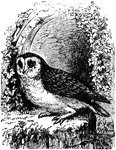
Small Barn Owls
"Aluco flammeus pratincola. Barn Owl. above, including upper surfaces of wings and tail, tawny, fulvous,…
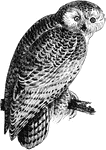
Snowy Owl
"Nyctea scandiaca. Snowy Owl. Pure white, spotted and barred with brownish-black markings, wholly indeterminate…
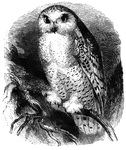
White Owl
The white owl (also known as the snowy or ermine owl), found in the colder latitudes of the world. Its…
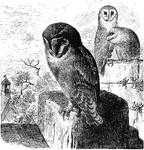
Barn Owls
"Aluco flammeus pratincola. Barn Owl. above, including upper surfaces of wings and tail, tawny, fulvous,…
